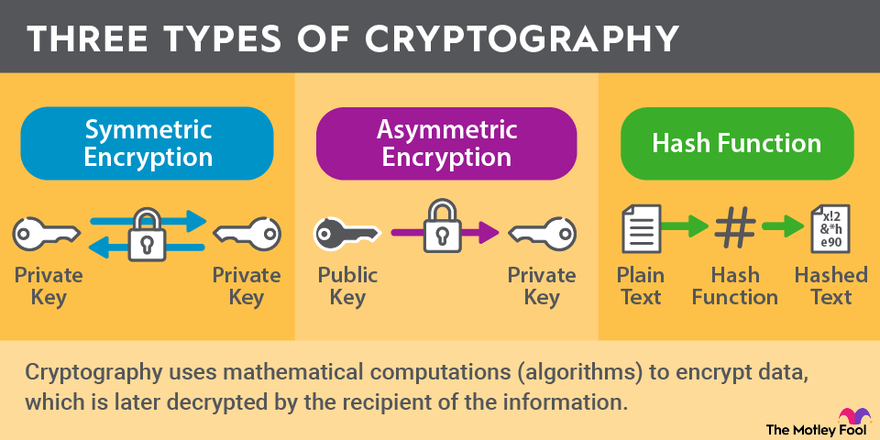Cryptography and linguistics are two seemingly disparate fields that, upon closer examination, reveal a tapestry of connections woven through the fabric of communication, security, and meaning. Both disciplines aim to encode and decode messages, whether to safeguard information or elucidate ideas. A biological imperative resides in both, driven by the need for survival, social cohesion, and the preservation of knowledge. As we explore the intricate interplay between cryptography and linguistics, we discover that this relationship not only enhances our understanding of each field but also illuminates deeper philosophical questions surrounding the nature of language and security.
Initially, it is essential to differentiate between cryptography and linguistics. Cryptography, in its essence, refers to the practice of securing information by transforming it into an unreadable format for unintended recipients. This process is crucial in our digital age, where data breaches and cyber threats pervade everyday life. In contrast, linguistics is the scientific study of language, encompassing syntax, semantics, phonetics, and the social aspects of communication. While the objectives of these two domains may diverge, they converge at several junctures, particularly in their reliance upon symbols and codes.
One of the most profound connections between cryptography and linguistics is the use of symbols as foundational elements in both domains. In linguistics, language operates through a system of symbols—words and sentences—that convey meaning and facilitate communication. Each symbol assigns a specific meaning within a cultural context, thereby allowing complex ideas to be articulated. Similarly, cryptography employs symbols in the form of algorithms and ciphers, which convert plaintext into enigmatic formats, preventing unauthorized access to sensitive information. This commonality evokes essential questions regarding the nature of symbols themselves. How do symbols derive their meanings? What governs the systems of encoding and decoding in both language and cryptography?
Encoding and decoding processes are central to both linguistic and cryptographic practices. In linguistics, encoding involves converting thoughts into spoken or written words that another person can decode. This dynamic exchange is facilitated by shared cultural and contextual knowledge. In cryptographical terms, encoding refers to the transformation of information into a secure format that obfuscates its content. The receiver must possess a key or method to translate the encoded message back into its original form. This dual process echoes through both fields, showcasing not only their similarities but also the necessity for a shared understanding between sender and receiver—be it linguistic comprehension or cryptographic proficiency.
The intricacies of language hint at the complexities of cryptographic algorithms, which often resemble linguistic structures. For example, cryptographic systems can employ syntax that mirrors grammatical rules—hierarchies that dictate how components relate to one another. Just as linguists analyze the syntactic structures of sentences, cryptographers may scrutinize the algorithmic architectures underpinning data encoding. This convergence prompts a deeper investigation into the cognitive processes involved in decoding. The problem-solving skills and pattern recognition quintessential to linguistics may also inform and enhance cryptographic practices.
Moreover, the etymology of certain cryptographic terms reveals linguistic underpinnings that further solidify this relationship. Consider the term “cipher,” derived from the Arabic word “sifr,” which means zero or empty. This notion of absence carries profound significance, suggesting that without the key required to decode a cipher, the message remains devoid of meaning. Such etymological connections highlight how historical linguistics has influenced modern cryptographic terminology, emphasizing the entangled nature of these fields across time.
Another intersection arises in the realm of cryptanalysis—the process of deciphering encrypted messages without access to the key. This field, which relies heavily on language patterns and frequency analysis, necessitates linguistic skills. The ability to recognize recurring symbols and lexicons resembles the methodologies employed by linguists who study language patterns, phonemes, and morphemes. Indubitably, skilled cryptanalysts meld linguistic insight with mathematical acumen, demonstrating how fluency in one area enhances the proficiency in another.
The exploration of natural languages also finds a mirror in cryptography regarding the concept of dialects and variations. Just as different regions may employ unique vernaculars or dialects, cryptographic implementations may vary significantly based on algorithms or encryption standards. The evolution of both linguistics and cryptography typically reflects shifts in societal needs and technological advances, creating a parallel narrative of adaptation and advancement. Innovations in one field can lead to breakthroughs in the other, as the quest for effective communication drives both linguistic evolution and the relentless pursuit of data security.
Ultimately, the fascination with the connection between cryptography and linguistics lies not merely in their operational similarities, but in their broader implications regarding knowledge, security, and human relationship dynamics. Language is inherently social, an instrument of engagement, while cryptography serves a purpose of safeguarding information and establishing trust. As we decode the layers of meaning within this relationship, we arrive at an understanding that transcends the structural; it encompasses a quest for clarity and connection in an increasingly fragmented world.
In conclusion, the relationships between cryptography and linguistics are multifaceted and nuanced, characterized by shared frameworks of encoding, decoding, and the integral role of symbols in human communication. As both fields evolve, their interconnectedness challenges us to reconsider the very nature of language and security. By probing deeper into these connections, we gain insight not only into the practical applications of each discipline but also into the essence of human interaction in the pursuit of meaning and understanding.








Leave a Comment